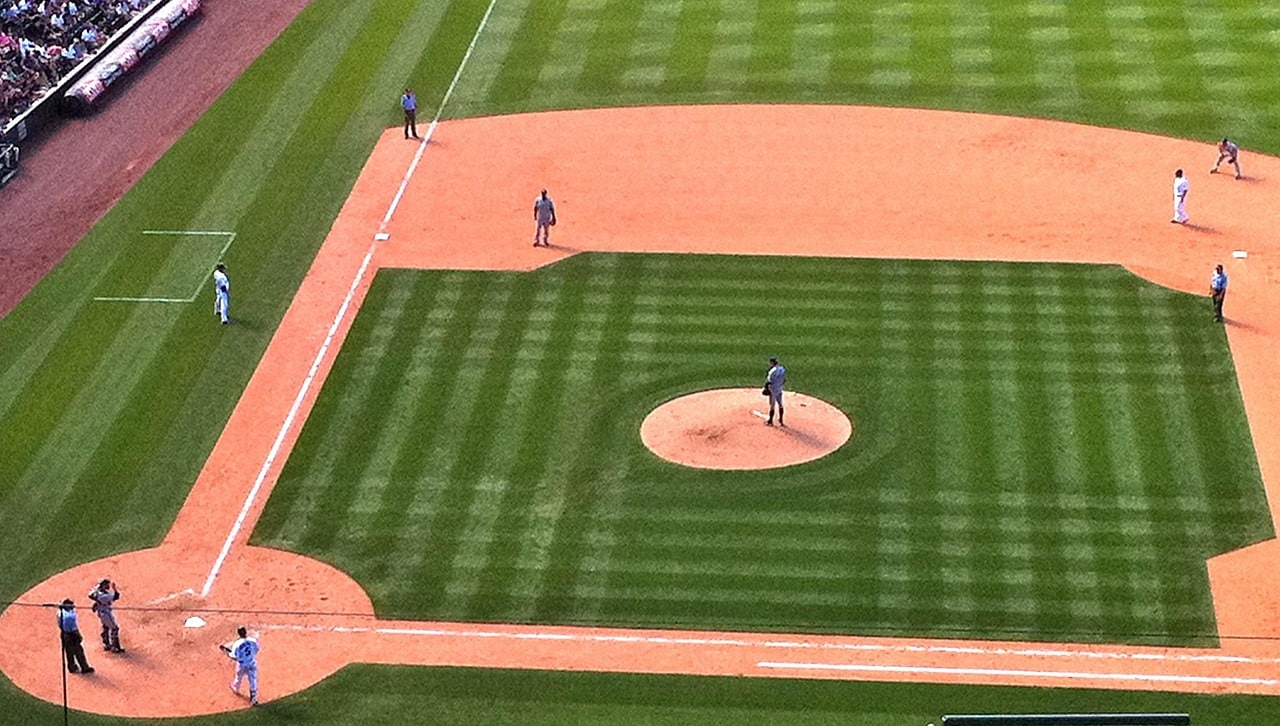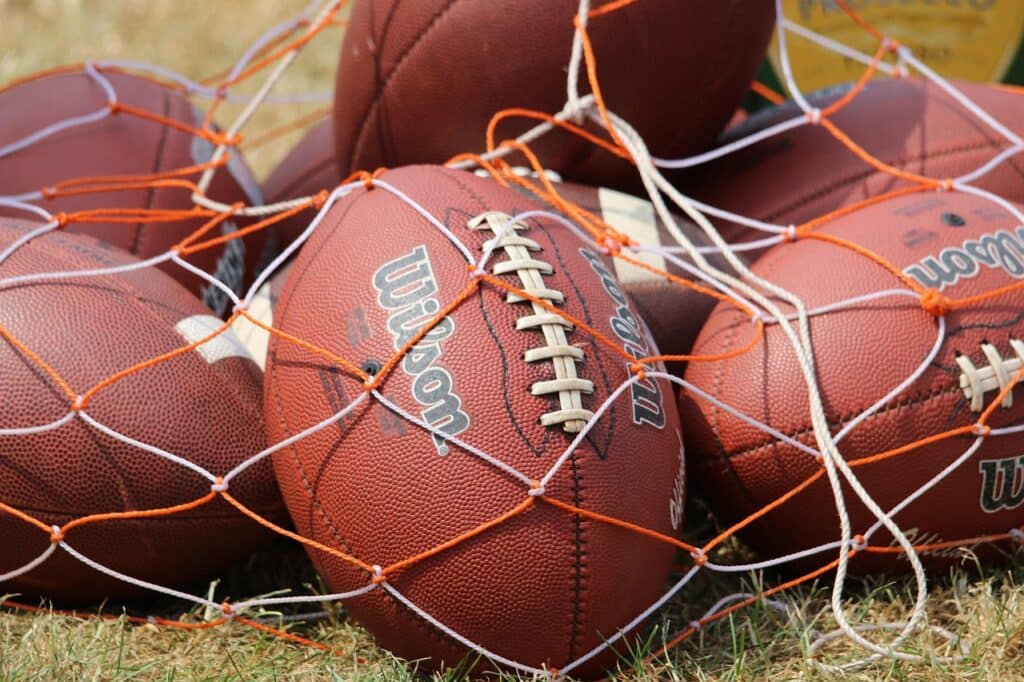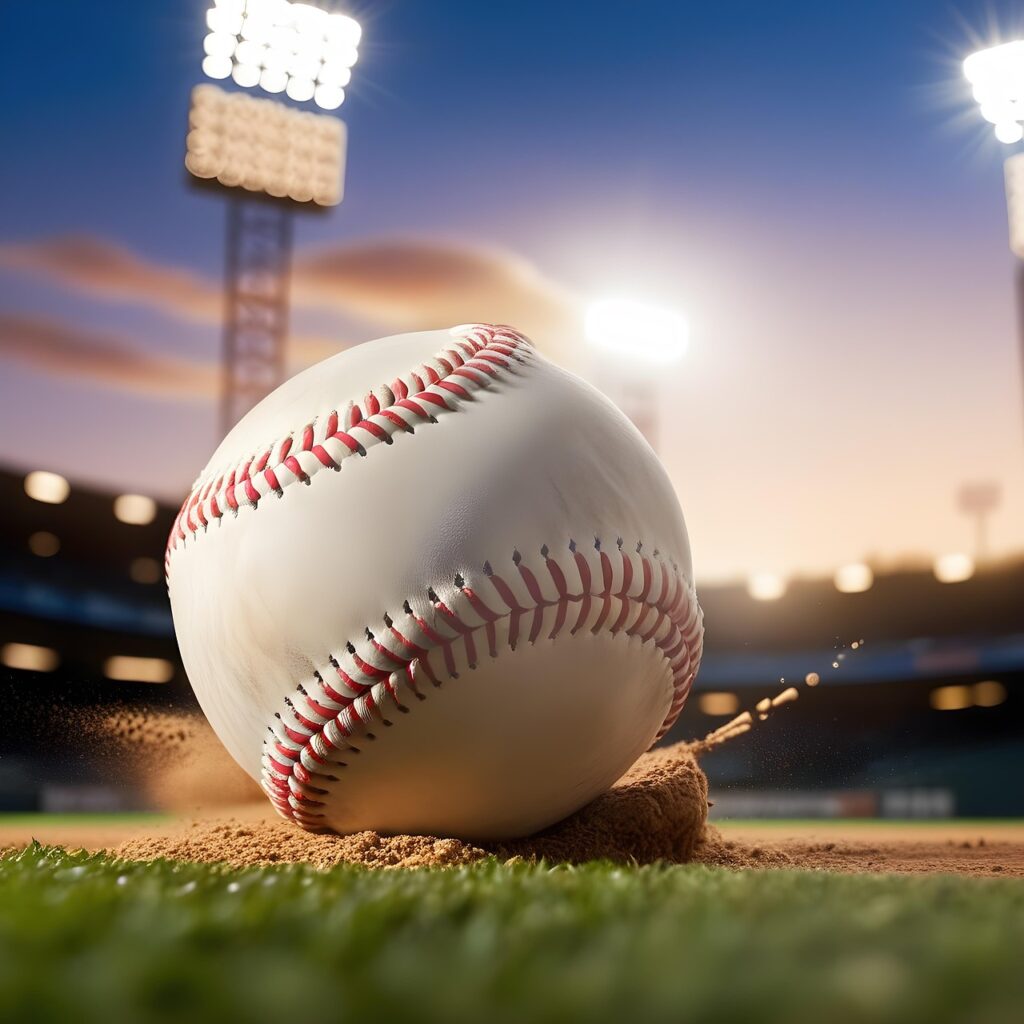Through Our Eyes: Play Ball

There are some who hold the belief that a blind person has no interest in sports, that we might just be unimpressed when, say, Patrick Mahomes, the Kansas City Chiefs quarterback, throws a perfect dime to a receiver as he is sprinting into the end zone with seconds on the clock. Or that we’d be snoring away while a point guard for a college basketball team sinks a three from above the key. And maybe especially disinterested in the glory and majesty of a baseball player hitting a walk off grand slam to win the world series.
All of it wasted on us.
I must confess that before moving to Kansas City and going to work for Alphapointe, I was actually one of those people. I found the excitement of sports unappealing. I assumed that sports – being a particularly visual form of entertainment – was entirely out of my reach. Some of you reading these words already know my story and my relationship with sports; how I got into it initially to adapt to a new city by learning the customs and speaking the language. Along the way I discovered that I had a passion for it.
As someone who has had a real journey with sports, both as a fan and as a broadcaster, I like to share that passion with as many people as I can. And this blog serves primarily as a learning opportunity for those with vision loss who want to know how they can follow along. Plus, it’s a good primer for people with vision who want to know how those of us with vision loss follow sports.
Feeling the Field
One major obstacle that looms in front of anyone with a vision loss is having a basic knowledge of what the field, diamond, court, or rink look like. Indeed, how are you supposed to visualize something you have never seen? Having a basic understanding of the stage where the drama will be taking place is crucial to the comprehension as well as simply following along. To that end, I am going to give a brief description of what I believe to be the three most common stages in American sports, (Football, Baseball, and Basketball).

Football
When I first got into football, my father taught me everything I know about the gridiron sport. He told me when thinking of the football field, to picture a shoe box 100 yards long and 50 yards wide, each team having an end zone at each end of that 100-yard shoe box.
The reason a football field is commonly referred to as a gridiron, is due to the white yard lines that stretch the width of the field. Also, at each end of the shoe box are goal posts that are used for the kicking of field goals.
Baseball Diamond
Frankly, calling it a baseball “Diamond” is a bit of a misnomer. I say that because it’s shaped more like a triangle or, think of it is a sort of funnel. At the bottom tip of the triangle is home plate at 6:00 o’clock, next to of which is the batter’s box where the batter stands. The bases run counterclockwise starting with first base at 3:00, second base at the top tip of the diamond at 12:00 o’clock, a short stop right next to second base around 11:00 o’clock, and third base at 9:00 o’clock. The base paths between bases are 90 feet long and are dirt as opposed to the rest of the field, which is grass. Also, in the grass middle of the diamond is a dirt mound known as the pitcher’s mound. It is slightly elevated off the ground and is exactly 60 feet 6 inches from home plate. Beyond the infield I just described is the outfield which is typically all grass and is prowled by three outfields, left, center, and right.

Basketball Court
For the basketball court, let us return to that shoe box analogy. This time, however, the shoe box is 94 feet long and 50 feet wide, with each end being called a baseline, and the sides being called side lines. At the exact middle of each baseline is the basket which hangs from a 10-foot-tall post. Directly in front of the basket is a painted section of court that is 10 feet wide by 19 feet long, commonly referred to as the lane. Beyond the paint is the free throw line, and past that is the 3-point line, (also called the arc)
“Seeing” Sports
Now that you possess a rudimentary knowledge of the geography of the three major stages that sports take place on, let us discuss the best way to “observe” the action that occurs.
Television by its very nature, is a visual medium and in my opinion not recommended for the blind sports fan. Broadcasts of games on TV are intended for a sighted audience, which is why I strongly advise that if you are a person with vision loss wanting to take in sports, you need look (no pun intended) no further than a radio.
Think of it like this: radio play-by-play of any sport is designed specifically for someone who is not watching the game. That means the radio broadcaster must be able to describe the game for someone who is not able to see the action. That’s perfect for those of us who are blind.
The best advice my father gave me when I got into sports was: “Cam, don’t bother with the TV broadcast. Find the radio broadcast of whatever team you’re interested in and listen to that. That is how you will get the most out of following sports.”
Now, I will admit that once you have a strong working knowledge of the sport you are following, “watching” it on TV becomes more possible. Regardless, no matter how profound your knowledge might be, the television broadcast will always be a poor substitute for the play-by-play broadcaster on the radio if you are a blind sports fan.
Participating in Sports Culture
If you’re like me, once you have unlocked your passion (your new obsession?) you want to share your fandom with everyone in your life and participate in any way you can. There are plenty of fully accessible ways to continue to feed your sports craving. If you possess a smart phone, then keeping up with sports news and schedules is as easy as downloading a few free and fully accessible apps like ESPN, CBS Sports, Yahoo Sports and many others, (including the apps that belong to each specific league such as the MLB app)
If you enjoy friendly competition, most major sports websites offer fully accessible with pick-‘em challenges where you select the winners of games, as well as fantasy sports, and if you enjoy sports discussion and debates you can always form a chat group with family or close friends.
Conclusion
A close friend of mine once said, “This world is not built for us, so we have to make ourselves fit.”
Sports might be a primarily visual medium, but that is no reason for it not to have throngs of visually impaired and blind fans. I allowed my blindness to be the reason I didn’t get into sports for the first 28 years of my life, and now I have unlocked a passion in myself that I was unaware I even possessed.
This mentality doesn’t have to apply to just sports either. If you have a passion or an interest that you want to follow, there is no reason why you can’t … you might just have to find a different way to go about it. Obviously, I’m probably not going to go out and get my pilots license, but I promise you I will be playing college football pick-em, debating with my family and close friends about who’s team is better, and screaming myself horse at my radio when the Chiefs and Royals play, and there is no reason that you can’t throw on a jersey, grab a snack and join





